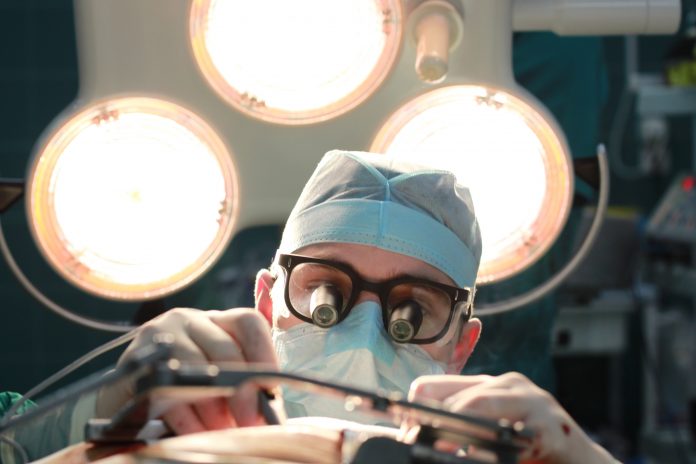Dr Connolly, Consultant Interventional Cardiology, talks exclusively to Open Access Government about the NHS’ use of AI technology like Heartflow in the fight against coronary heart disease
Coronary heart disease (CHD) is one of the leading causes of death in the UK. It is responsible for more than 66,000 deaths each year and it is estimated that 2.3 million people in the UK are currently living with the disease. CHD develops when the arteries leading to the heart narrow or become blocked, which can reduce blood flow, and cause chest pain and heart attacks.
Open Access Government hears from Dr Connolly, Consultant Interventional Cardiology with Sandwell and West Birmingham Hospitals NHS Trust, on how the NHS is battling one of the UK’s biggest killers.
1. How common is misdiagnosis of the best treatment for CHD? When did you begin to realise misdiagnosis was a significant problem?
“Stress testing was once the go-to method to diagnose CHD, but now it’s generally considered to be quite ineffective. It’s an example of one of the old tests; however, as medicine and technology continue to evolve, diagnostic testing has become more specific and more sensitive.
“Today, non-invasive cardiac computed tomography (CT) scans can be used to provide anatomical information. If there is a blockage, it will be apparent on the CT scan. Sometimes, additional information about the blockage is needed to understand how it is impacting blood flow and we now have the option of ordering a HeartFlow Analysis, a non-invasive test that provides a digital 3D model of the arteries.
“A medical study published in the European Heart Journal found that, in two-thirds of cases, the HeartFlow Analysis changed the diagnosis for patients(1), meaning that there’s the possibility an operation can be avoided altogether. Previously, an invasive angiogram may have been considered post-CT scan if it wasn’t clear what was wrong with the heart.”
2. Concerning the use of AI in preventing Coronary Heart Disease, do you feel that the NHS is going to transition to general use of AI to tackle this problem? Would this be in the imminent future or is this a more gradual possibility?
“I think we’ll come to use AI more and more in diagnosing and treating CHD. But it won’t be an overnight migration – I think the shift will be gradual. As computers evolve, the technology available to us will get better and better and adoption will become increasingly widespread.
“Under the NHS’s Innovation and Technology Programme (ITP), the HeartFlow Analysis is currently available in more than 30 hospitals across the country. The idea is that it should become available in as many hospitals as possible so that more doctors are able to more accurately diagnose and develop a treatment plan for their patients with coronary heart disease.”
3. What exactly is the technology used by HeartFlow and how is HeartFlow helping patients?
“HeartFlow relies on the data from a coronary CT scan, which doctors can order for their patients if they suspect CHD. This data is securely uploaded to the cloud and sent to HeartFlow’s US base in California, where the company leverages deep learning and highly trained human analysts to produce a digital, 3D model of the patient’s heart.
“Millions of complex algorithms are then applied to provide a detailed picture of blood flow in the patient’s coronary arteries and assess how any blockages may compromise this. The HeartFlow Analysis is then sent back to clinicians who can determine the best course of treatment.
“For patients, having this technology available to aid in their diagnosis, means they can get a definitive answer on if they have CHD in just one visit. In my clinics, I tend to find that in around three in 10 of my patients, it’s not clear if they have CHD. Historically, this would have meant more invasive testing to find out for sure.
“But using the HeartFlow Analysis means many patients can avoid this, and the risks that come with procedures like invasive angiograms.”
4. What effect have you been seeing in hospitals since HeartFlow has been in use?
“I’ve used the test on around 100 patients now. Of those, about 70% didn’t require any follow up invasive testing. Avoiding 70 procedures is clearly excellent for the patients themselves but it’s also hugely beneficial for the hospital and represents considerable cost savings.
“It also means that lab time isn’t taken up carrying out diagnostic angiograms that ultimately don’t lead to stenting or bypass surgery. Put simply, we’re better able to serve the people who need treatment and avoid any unnecessary testing for those who don’t.
“In a separate study by The National Institute for Health and Care Excellence (NICE), it was suggested that HeartFlow could save the NHS approximately £9.1 million per year, or £214 per patient. Analysed savings included those patients who would not have to have further tests as a result of a HeartFlow Analysis.”
5. What implication do you think that HeartFlow has for CHD treatment globally? Which countries do you think could replicate this model of using AI in CHD treatment or are already using something like it?
“HeartFlow Analysis and a CT-first approach to CHD diagnosis undoubtedly have global implications – it’s allowing clinicians to understand the status and severity of their patient’s condition quicker and easier than ever before.
“For countries like the US, which has an insurance-based healthcare system, I think healthcare providers will increasingly ask for a CT-first approach to diagnosing CHD as a more cost-effective, lower risk procedure.
“At present though, the States lags slightly behind Europe in its use of CT in healthcare.
“The technology the UK is using with HeartFlow represents a huge advance in our medical capability and it will be interesting to see how this, and technologies like it, are embraced around the world in the coming years.”
References











